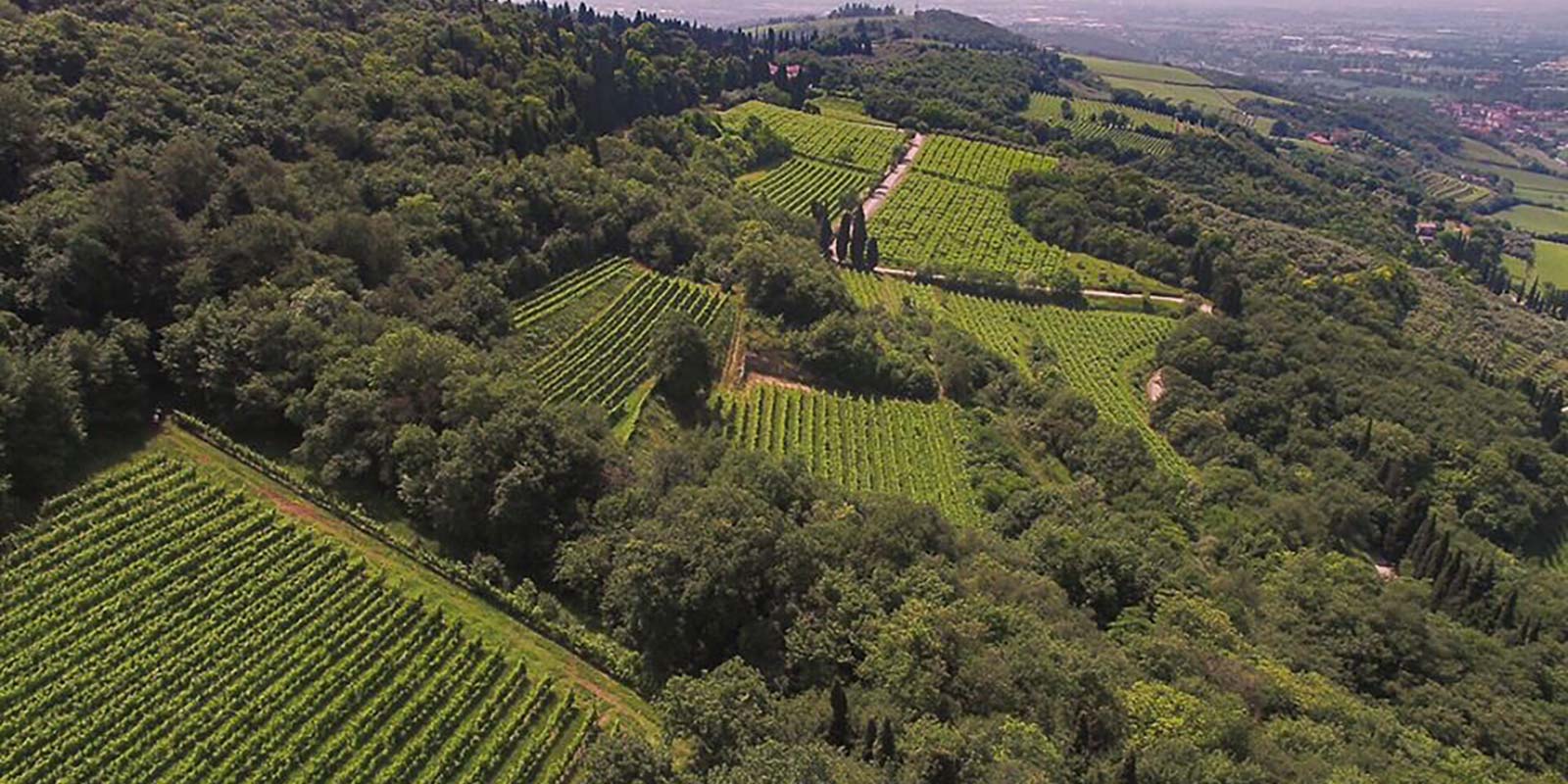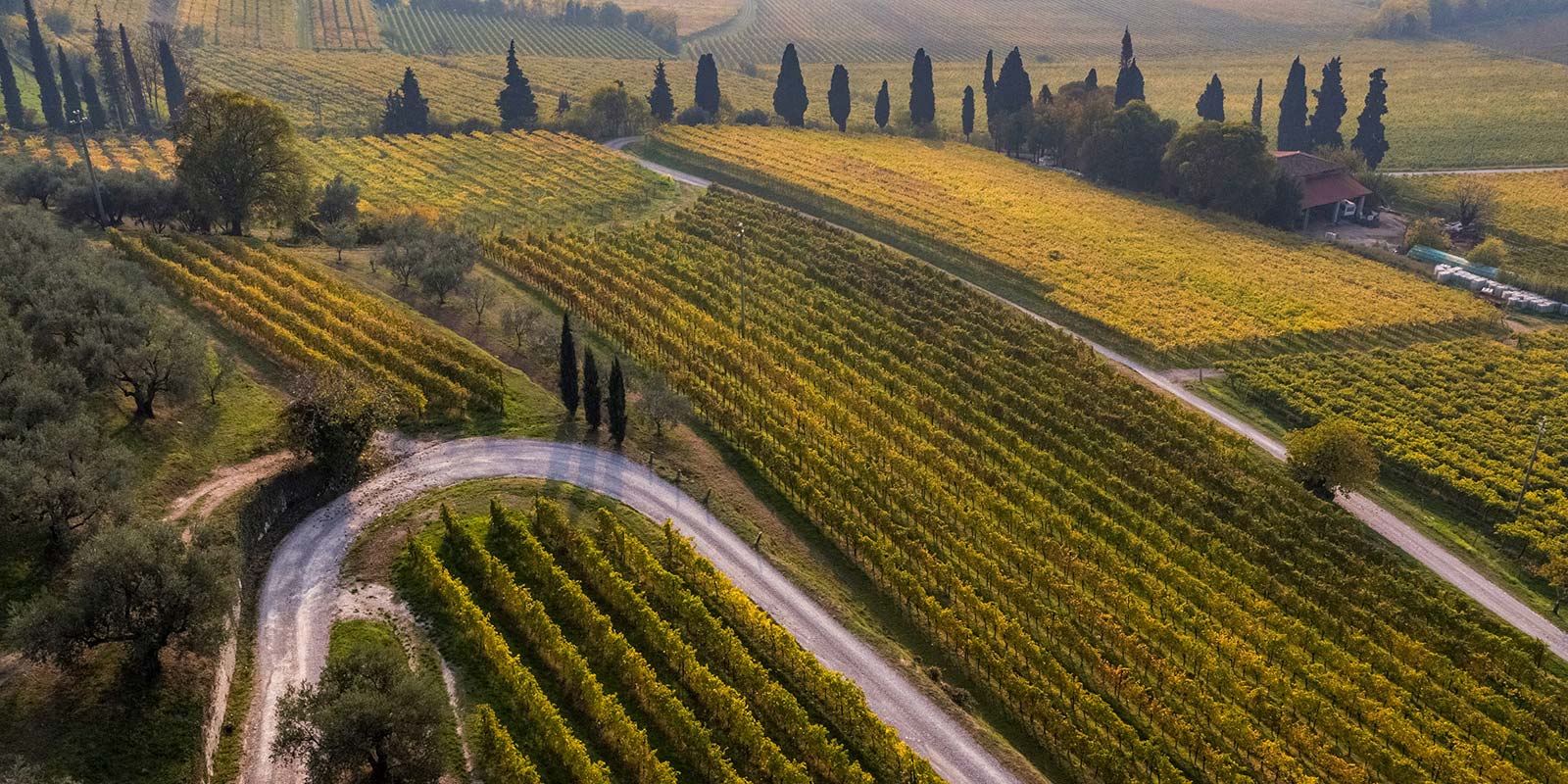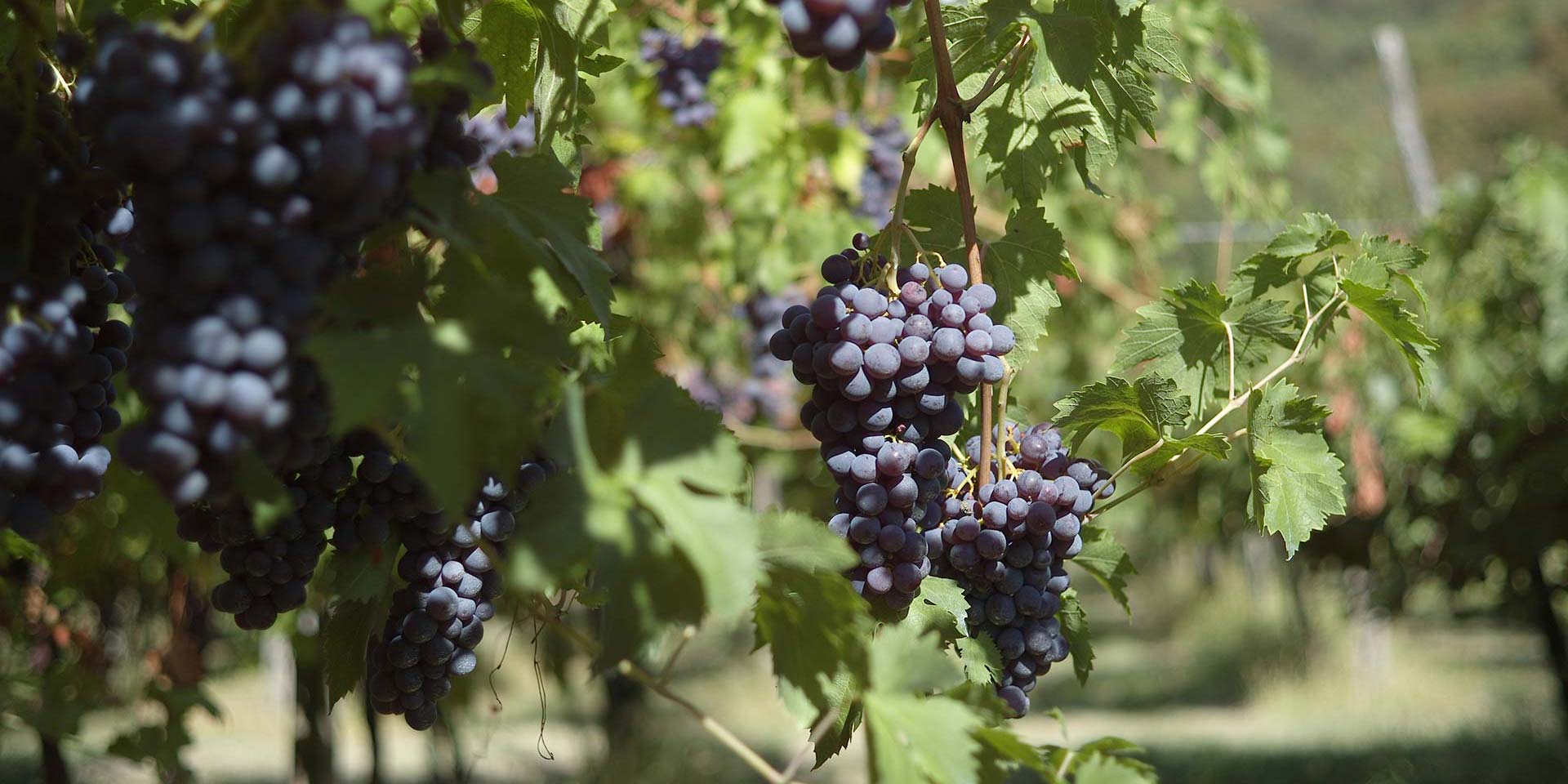La vigna Villa San Carlo
Twenty hectares of vineyards, planted on ancient dry stone wall terraces, cover an area from about 100 to 330 metres above sea level, on soils consisting of marly limestone such as the white “Biancone” stone and the local “Scaglia rossa”, a red marine sedimentary rock. The vineyards are divided into roughly 40 small plots, which are managed separately and surrounded by extensive woodland, and differ in terms of soil, ranging from medium to very calcareous, grape varieties and microclimates. The agronomic goal is to enhance each plot of land to the fullest.

The native Corvina, Corvinone, Rondinella, Molinara and Garganega grape varieties are mainly trained with the Pergola Veronese and Pergola Trentina trellis systems as per tradition, while small amounts of Croatina, Teroldego and Cabernet are espalier trained with single or double Guyot pruning, depending on the variety.
A large number of the company’s vineyards, planted between the 1960s and 1970s and trained with the Pergola Veronese trellising system, are painstakingly managed and yield very concentrated berries, with a high polyphenol content and excellent potential.

Thanks to good agronomic management, grape production is limited to between 70 and 90 quintals per hectare in order to strike the perfect balance as far as the main components of the berries are concerned, thus producing balanced, precise and complex wines.
Our vineyard management has obtained the RRR – Riduci, Risparmia, Rispetta (Reduce, Retrench, Respect) certification from the Consortium for the Protection of Valpolicella Wines, which demonstrates that our company is sustainable not only with regard to vine growing, but also ethically and socially. The 2020 harvest marks the beginning of our conversion to organic farming, which will see us producing organic wine by 2023.

Orientation
The fact that the vine rows are exposed to the south or south-west, and therefore receive plenty of sunlight, allows the grapes to ripen well. Thanks to very windy weather and extreme temperature ranges during pre-harvesting, we are able to obtain perfectly ripe and healthy berries with an elegant aromatic potential.
With the 2020 harvest we started the organic conversion plan and since 2023 we have obtained organic certification both at an agronomic and winery level.
